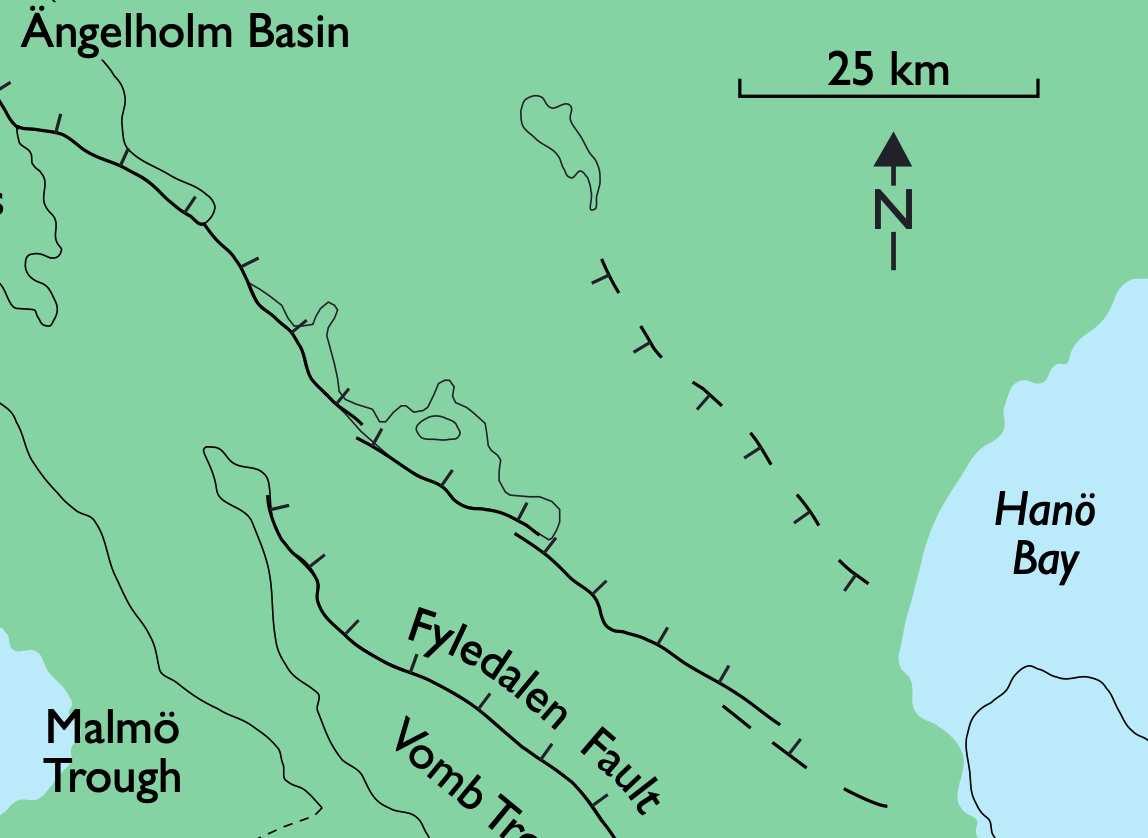
How to Cite
Share
Abstract
A Sinemurian mudstone-dominated succession was exposed until recently in the Gantofta quarry in Skåne, southern Sweden. The deposits are placed in the Döshult and Pankarp Members of the Sinemurian–Aalenian Rya Formation. Similar facies of the same age are widespread in the Danish Basin where they constitute the F-Ib unit (F-I member) of the Fjerritslev Formation. The Gantofta succession thus represents the easternmost extension of the environment characteristic of the Fjerritslev Formation and is essentially the only locality where it has been possible to study the facies of this formation in outcrop. Sedimentation seems to have taken place under relatively quiet tectonic conditions except for the possible fault-control of the basin margin. The lower part of the Gantofta section is of Early and early Late Sinemurian age. It represents the upper part of the Döshult Member and consists of muddy, lower shoreface sandstones, abruptly overlain by dark, bioturbated, fossiliferous mudstones with thin storm siltstones and sandstones. They are overlain by the Upper Sinemurian Pankarp Member which comprises red-brown, restricted marine calcareous mudstones with an upwards increasing number of storm siltstones and sandstones reflecting general shallowing and shoreline progradation. The succession spans the greater part of two simple sequences with a distal sequence boundary located at the boundary between the Döshult Member and the Pankarp Member. The exposed part of the lower sequence includes a thick transgressive systems tract and a very thin highstand systems tract. The upper sequence is represented by an undifferentiated transgressive and highstand systems tract. An Early Sinemurian sea-level rise, a late Early Sinemurian highstand, an early Late Sinemurian fall and a Late Sinemurian minor rise and a major fall are recognised. Nearby boreholes show evidence for an end-Sinemurian – Early Pliensbachian major rise. This evolution corresponds well with trends recorded in the subsurface Fjerritslev Formation of the Danish Basin. Comparison with published European and British Jurassic sea-level curves show similar overall trends, but exhibit differences in the precise ages of sequence boundaries and maximum flooding surfaces. This may reflect poor biostratigraphical resolution of the Gantofta section, differences in sequence stratigraphic interpretation, real differences in the age of sequence stratigraphic key surfaces, or the basin marginal position of Gantofta in the Fennoscandian Border Zone.
How to Cite
Share
Downloads
Editors: Jon R. Ineson and Finn Surlyk
The Jurassic rocks of Denmark and East Greenland record the evolution of two discrete portions of the Mesozoic rift complex, now separated by the North Atlantic Ocean. The Jurassic of Denmark and adjacent areas occurs mostly in the subsurface and research has thus focussed [...]










